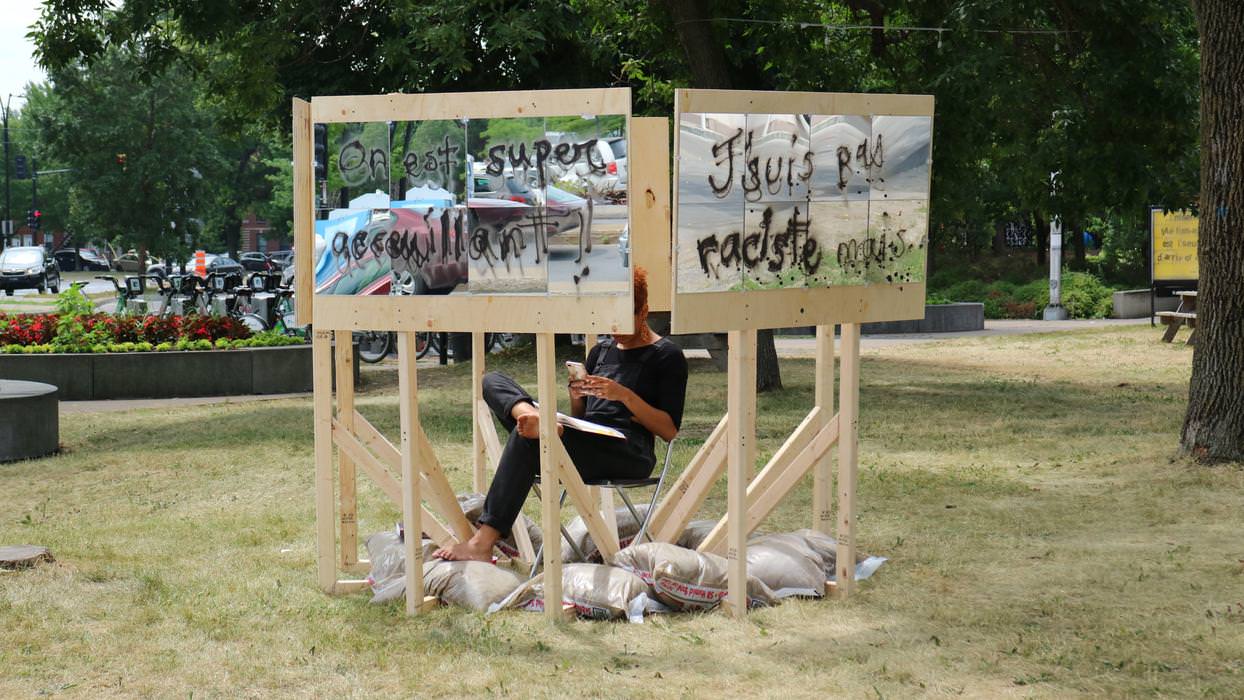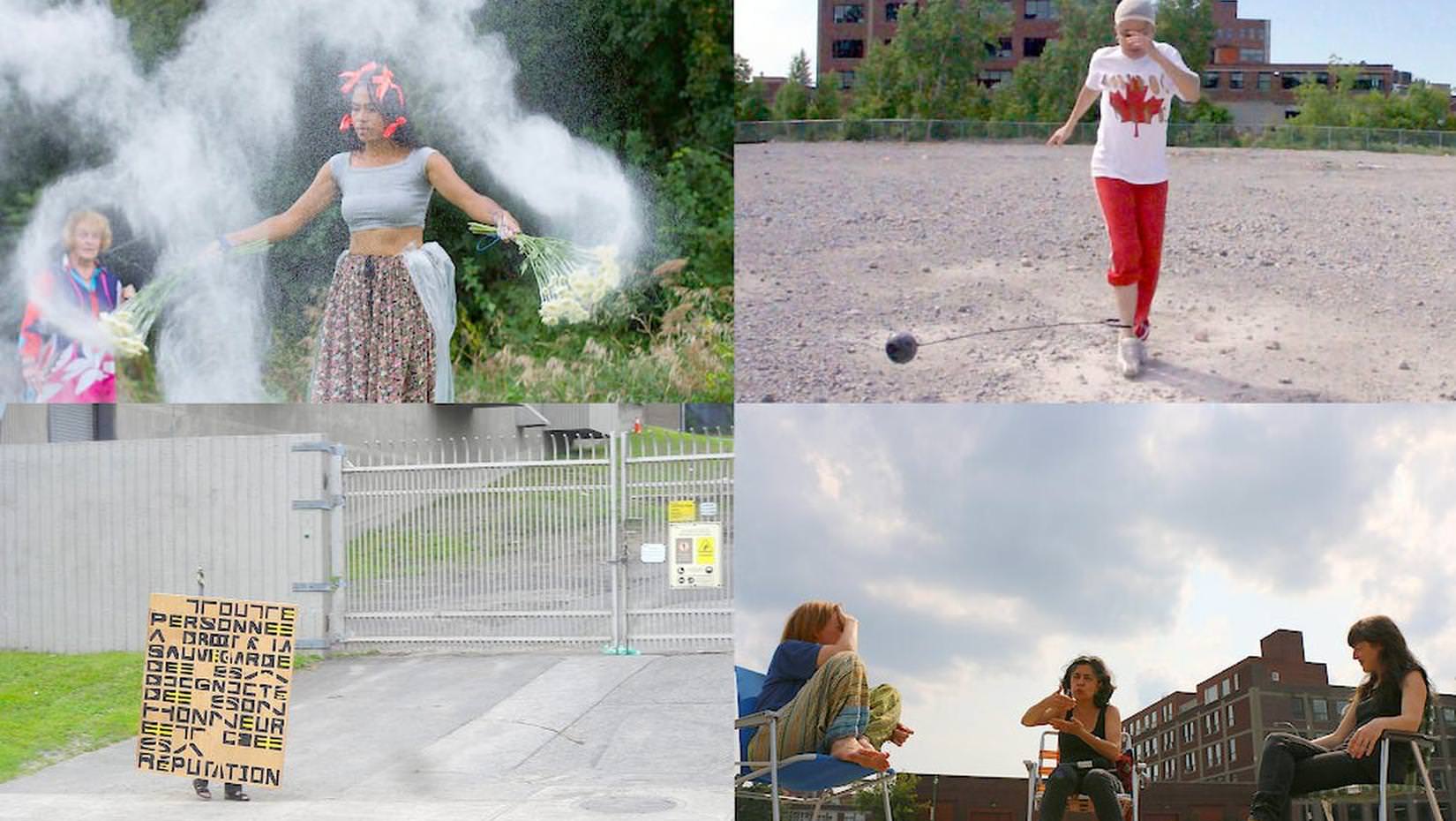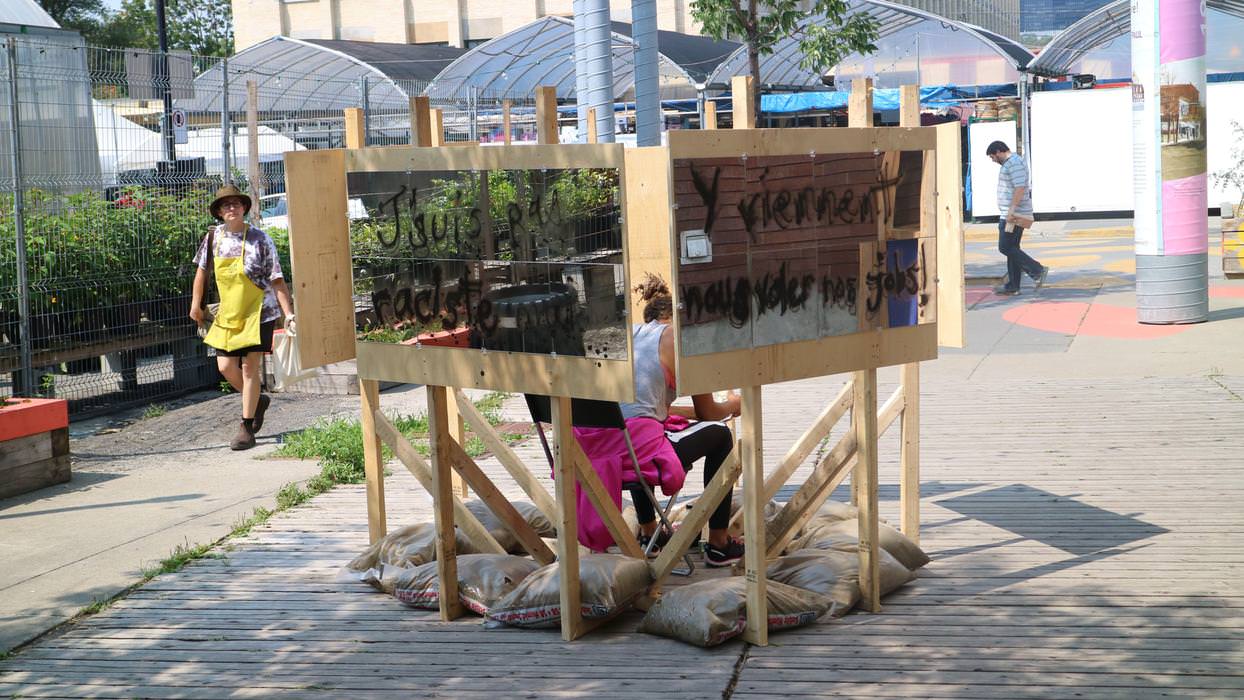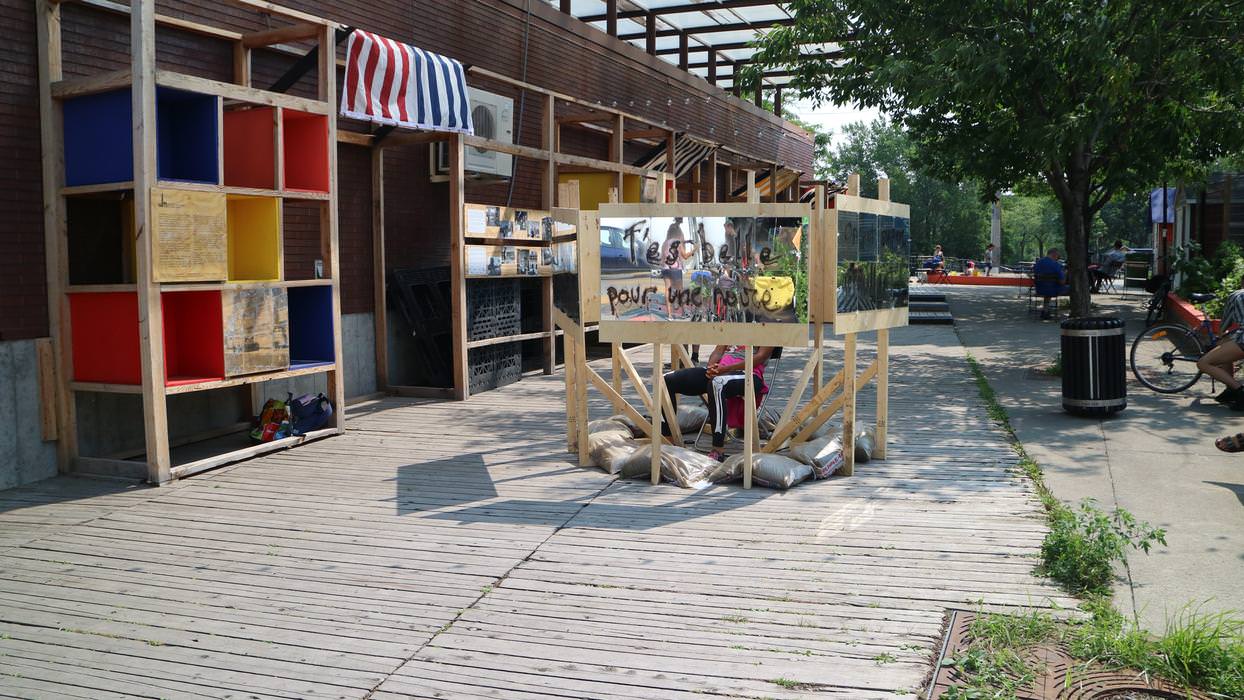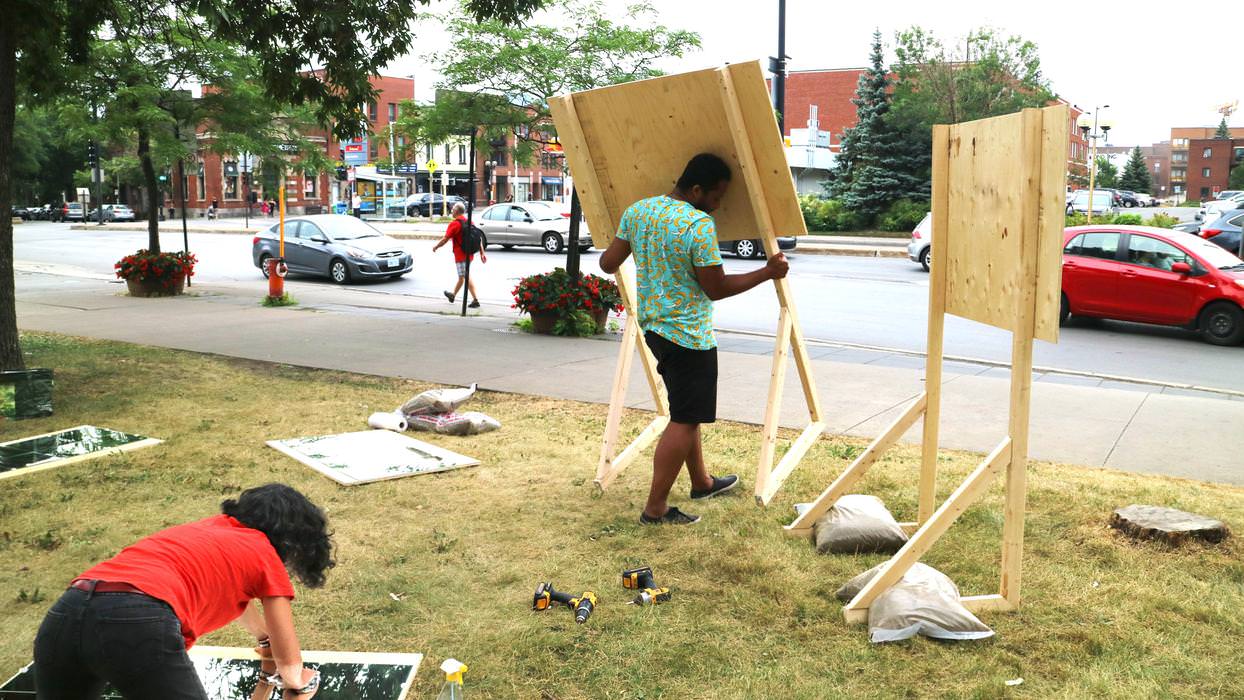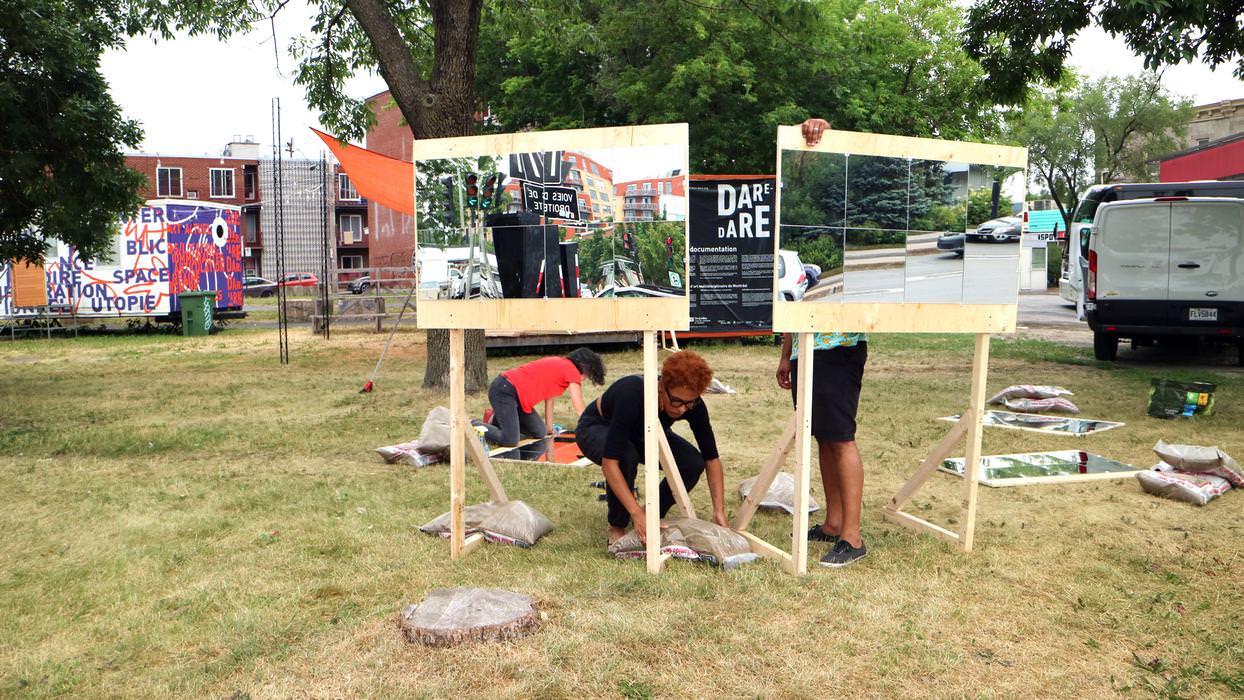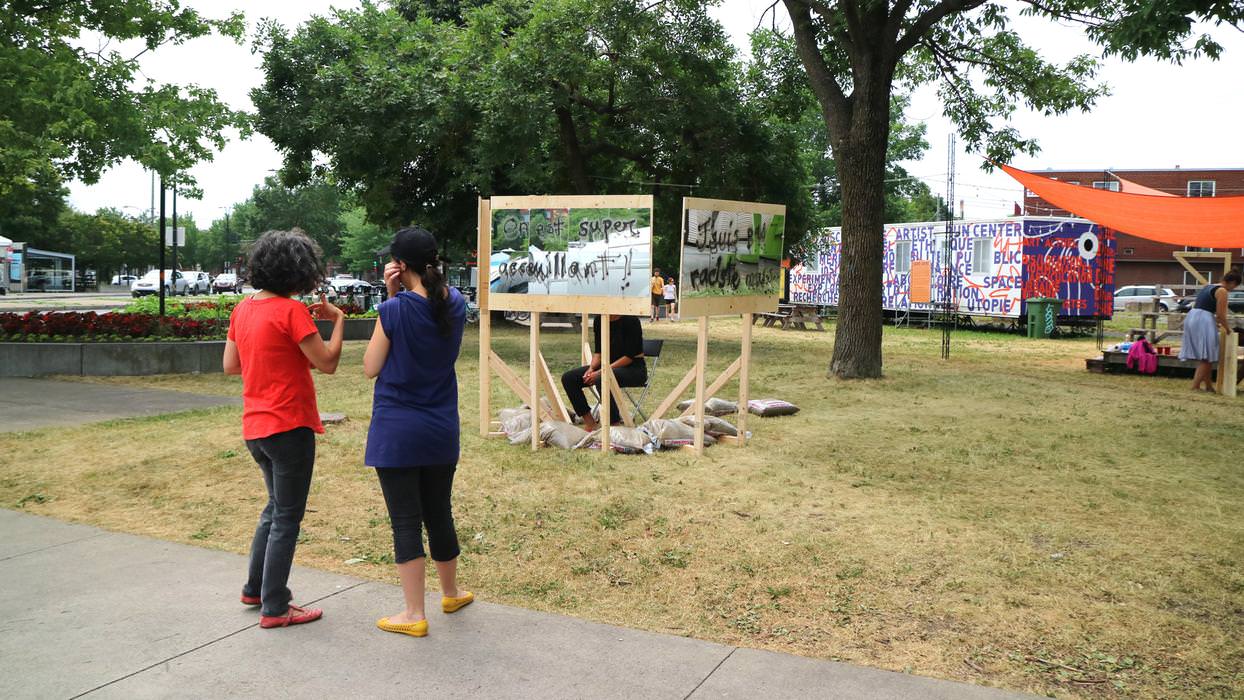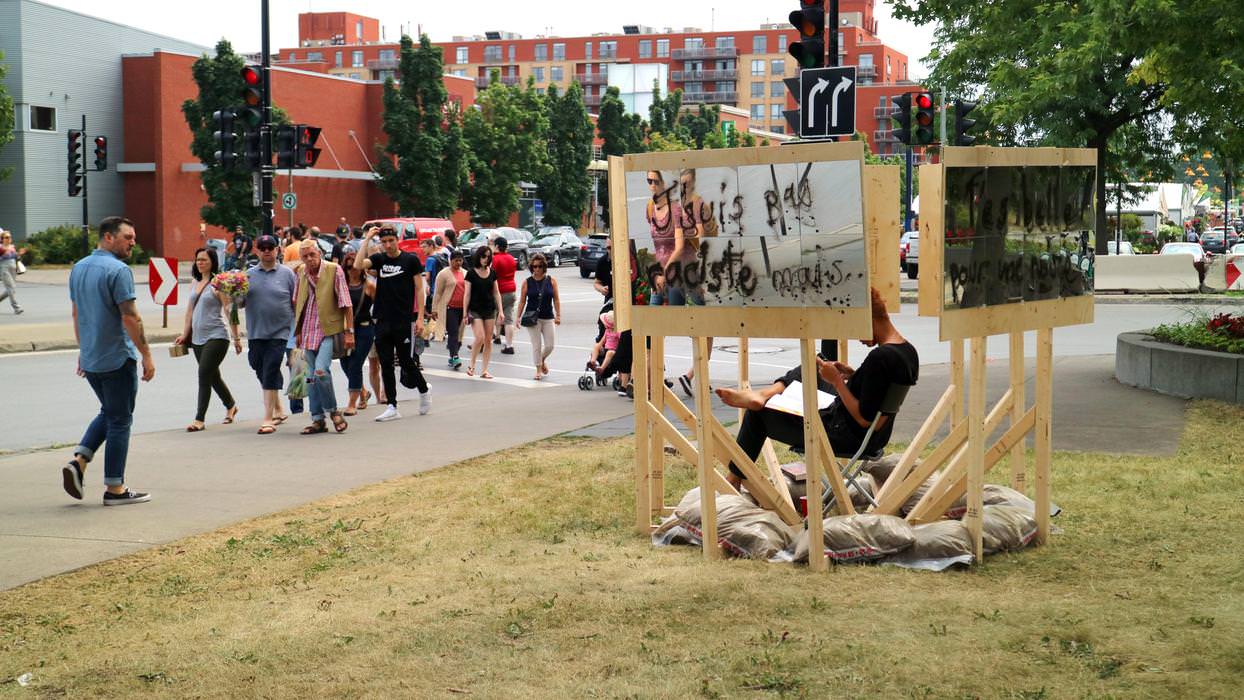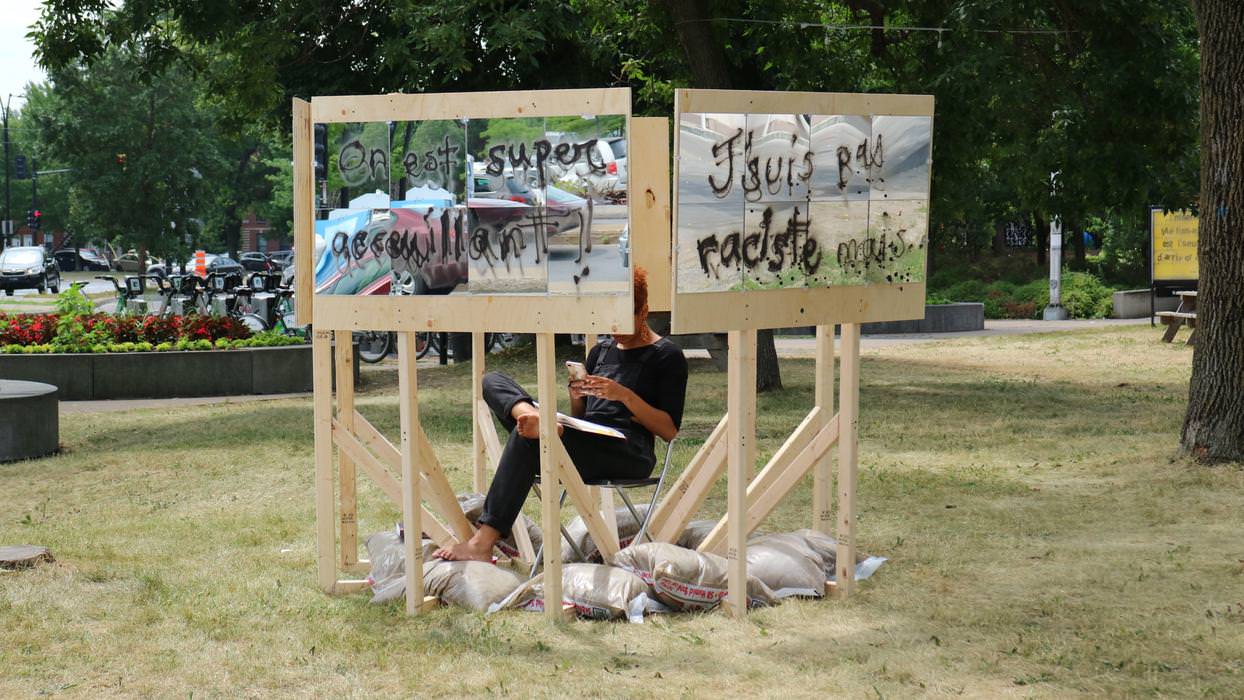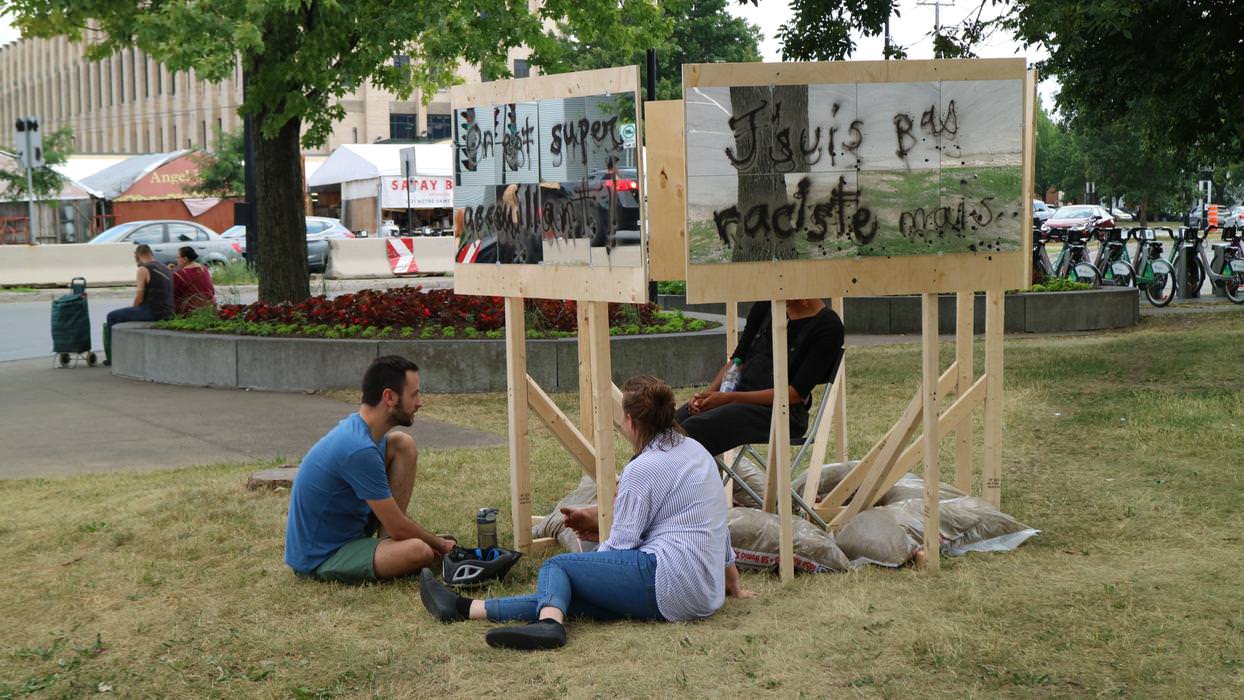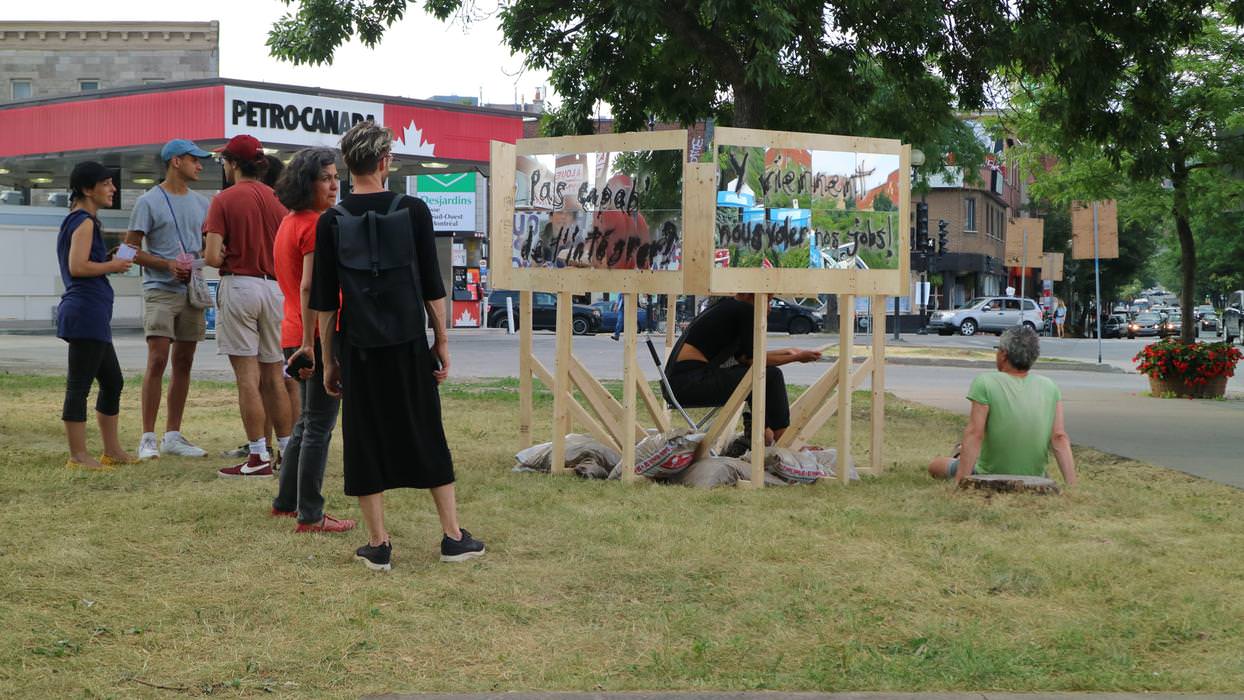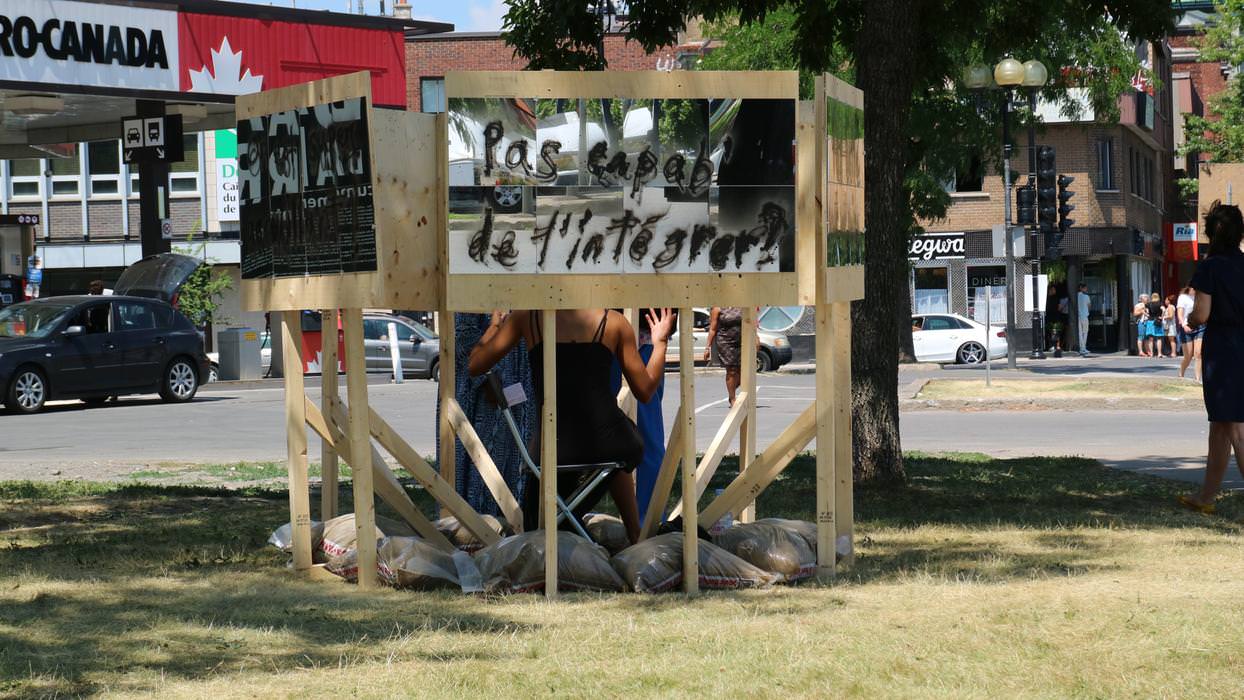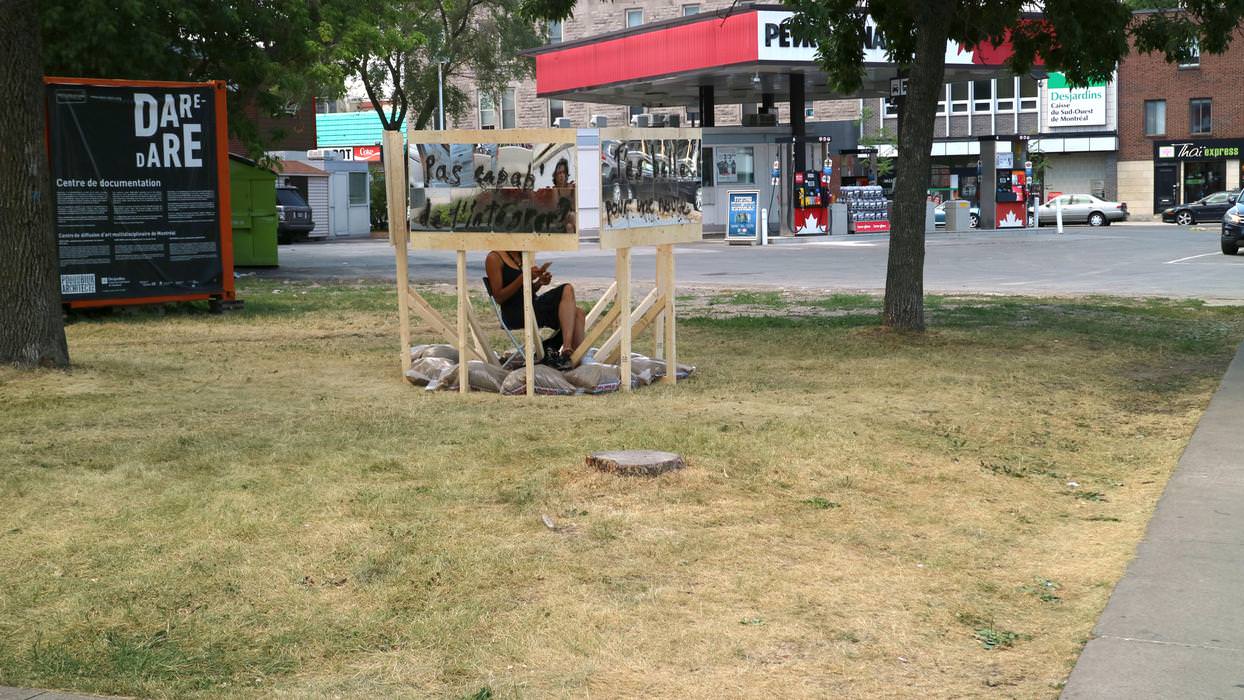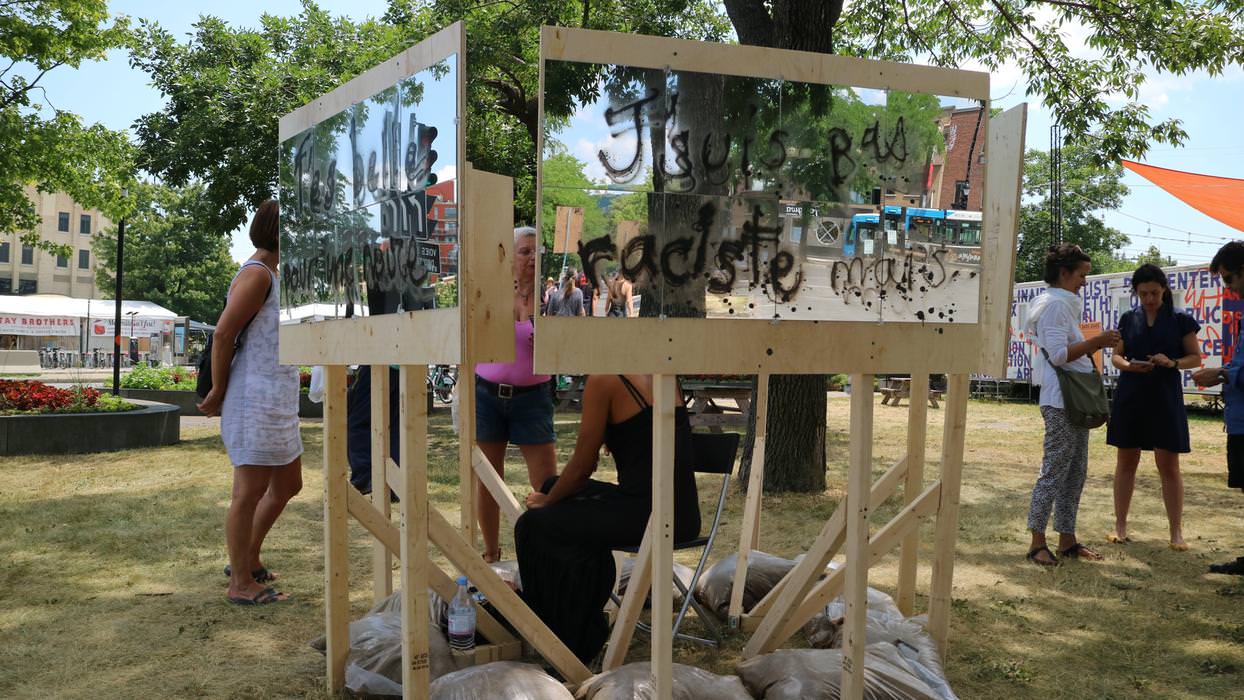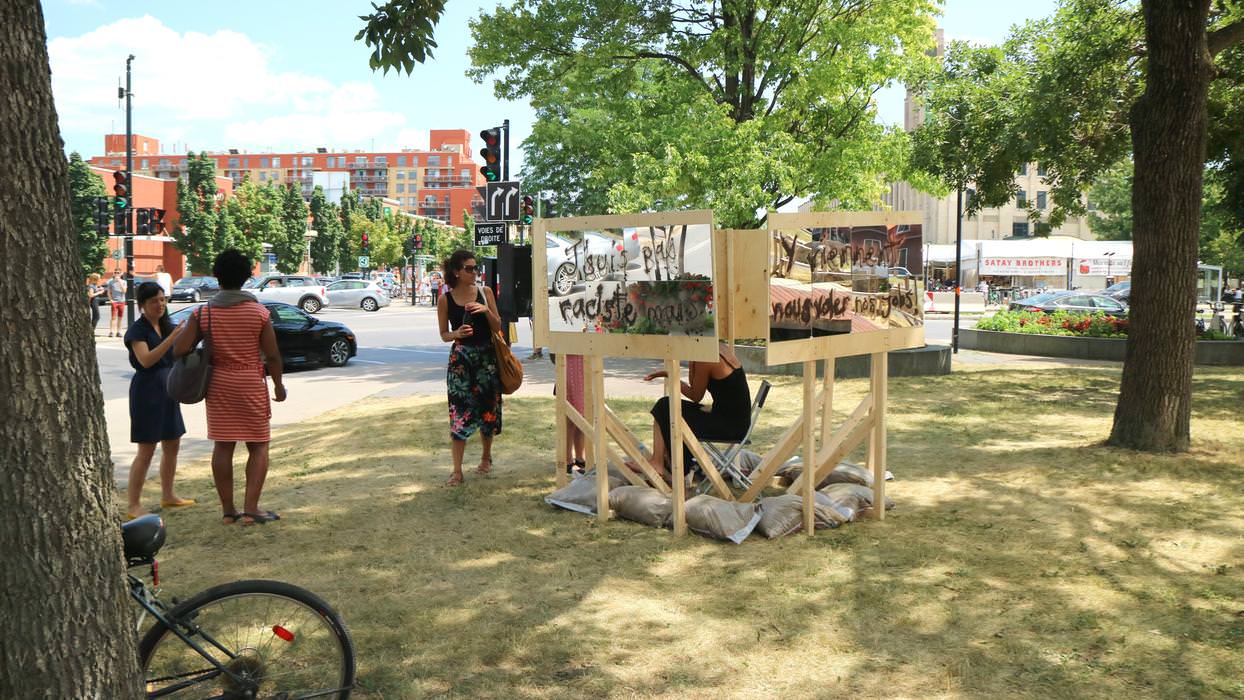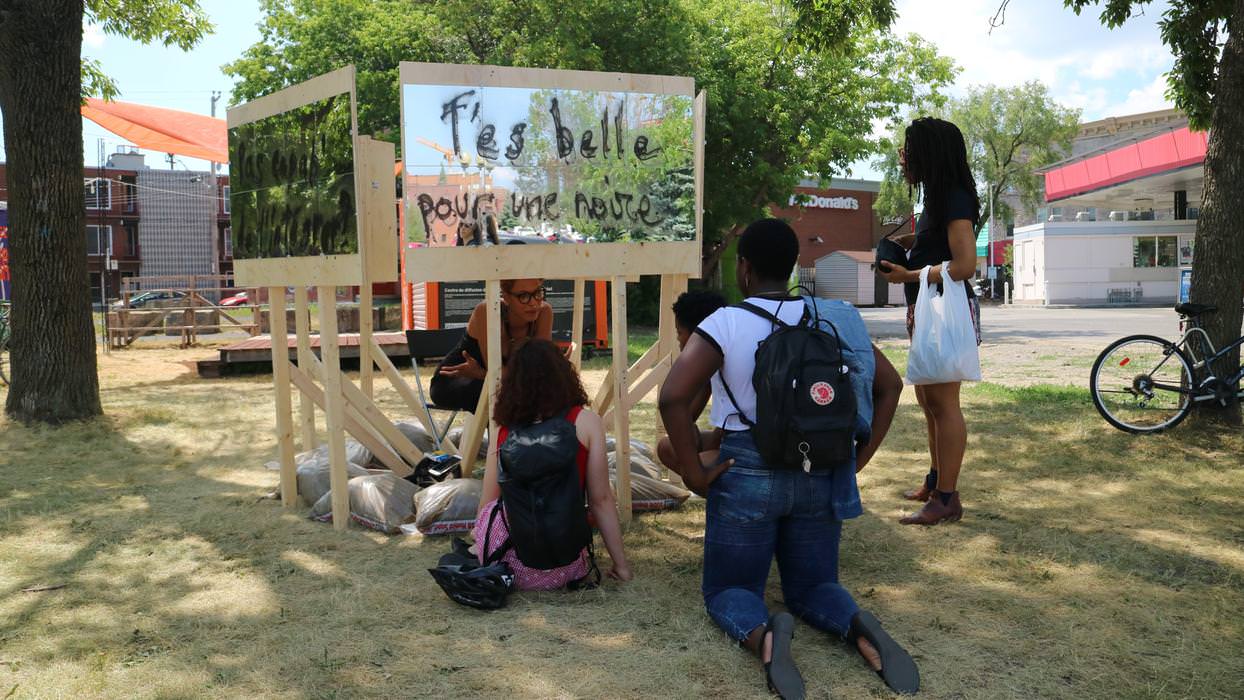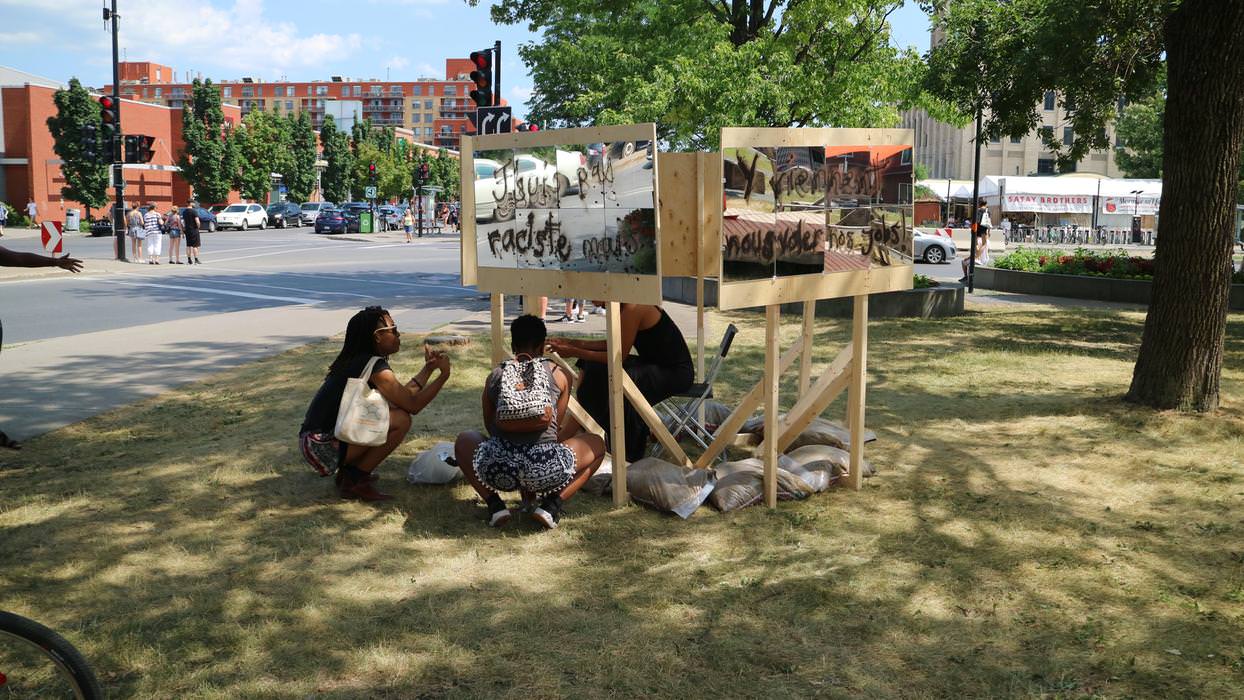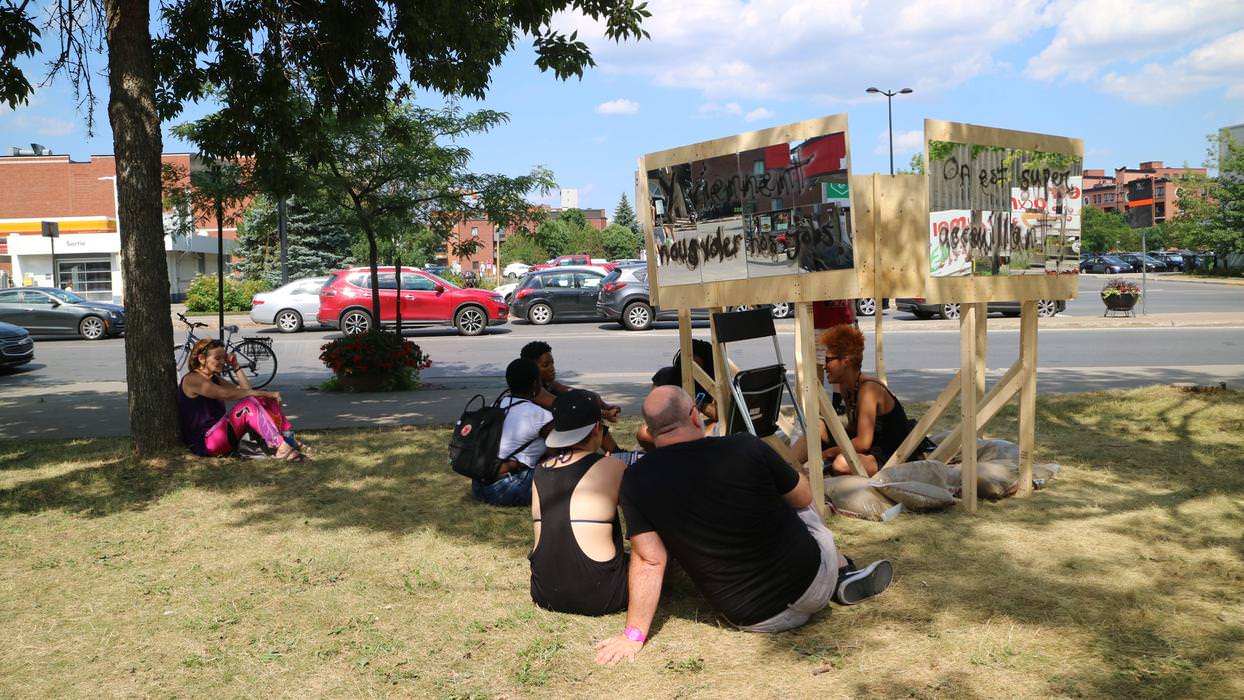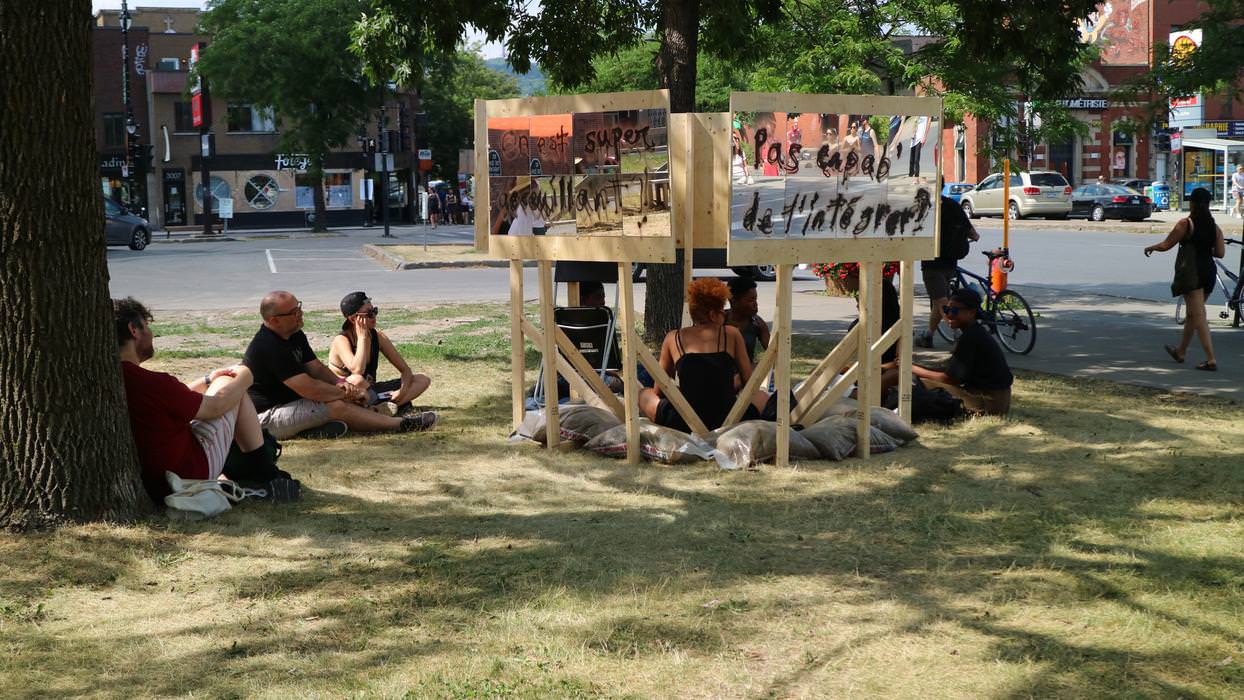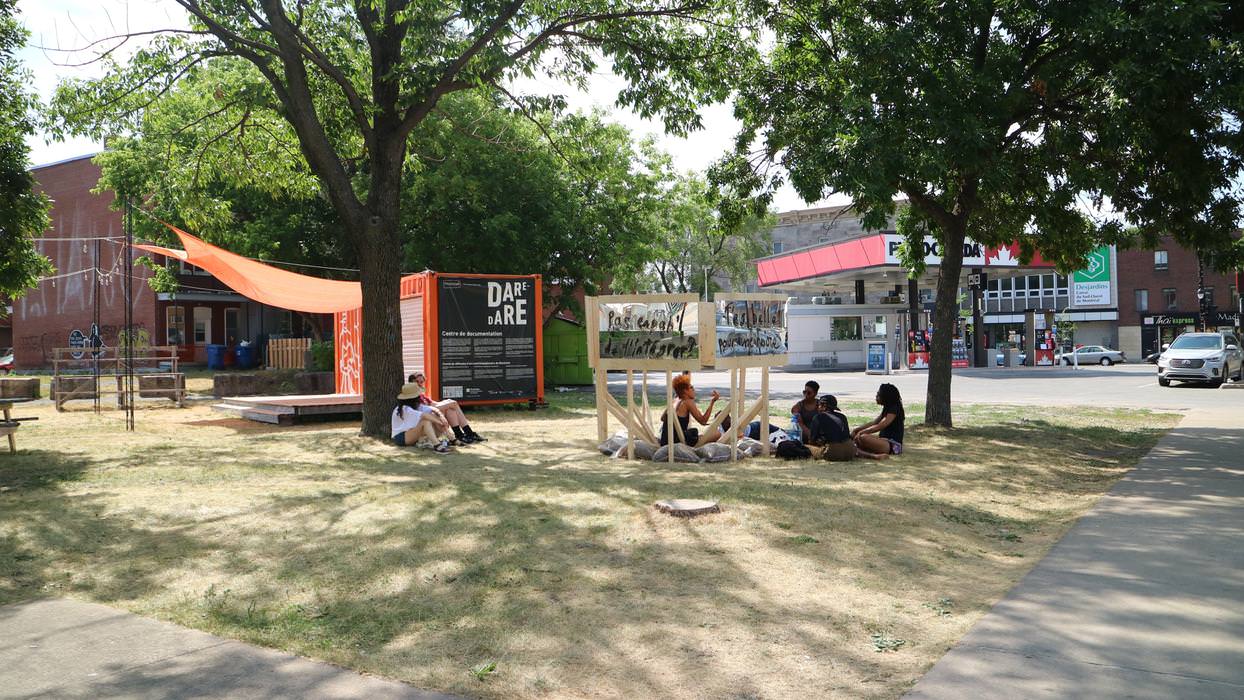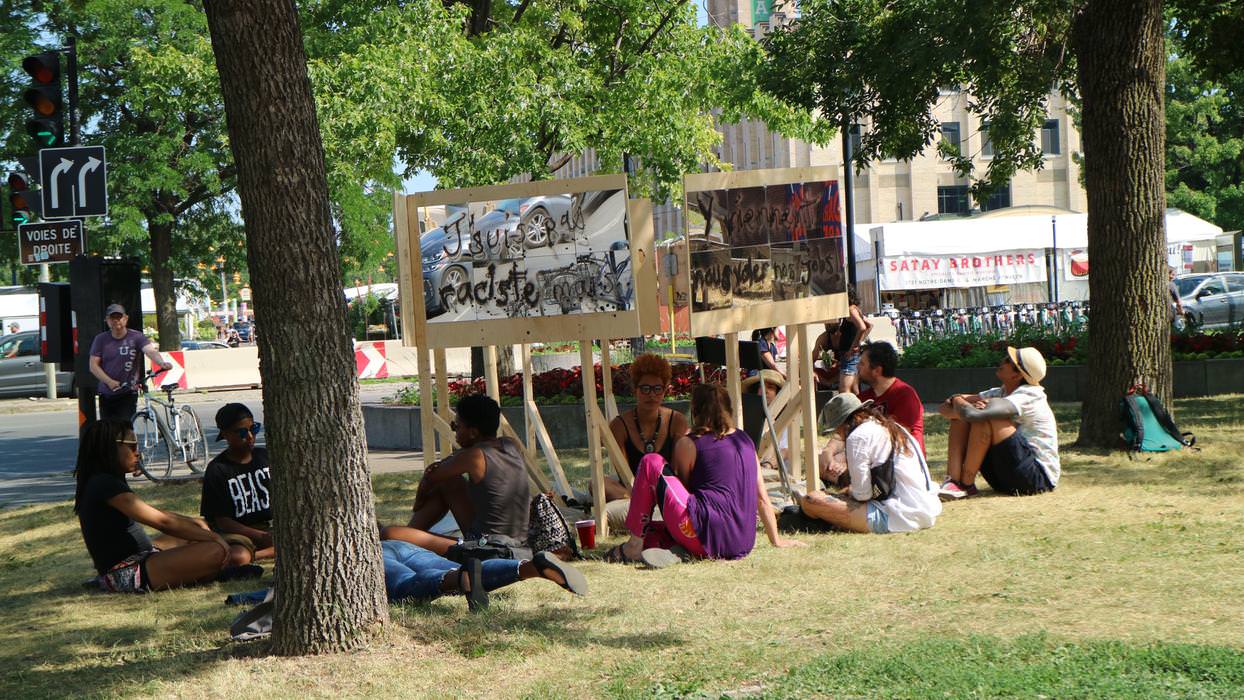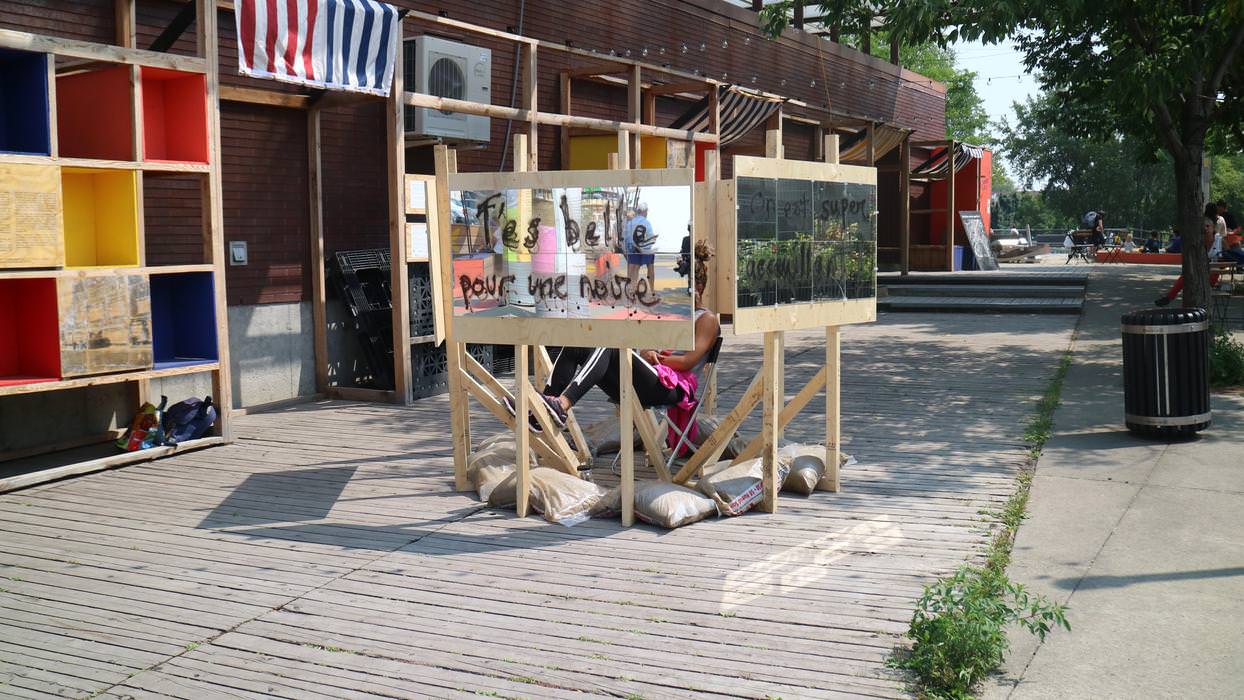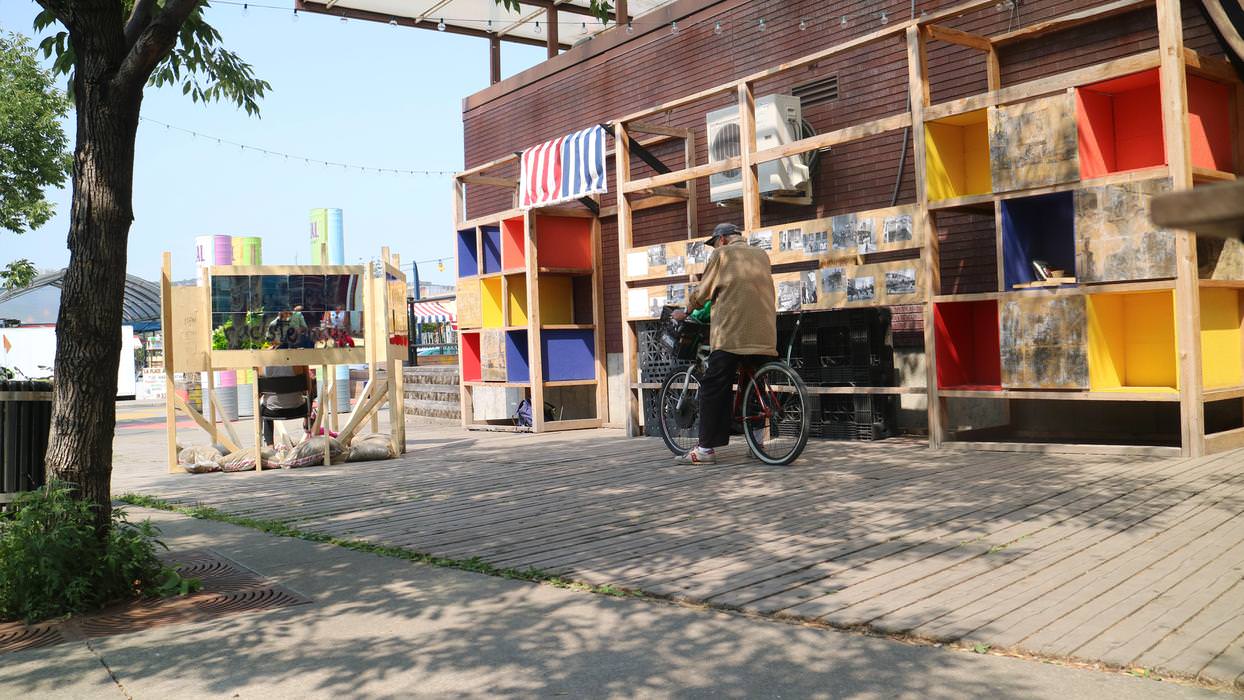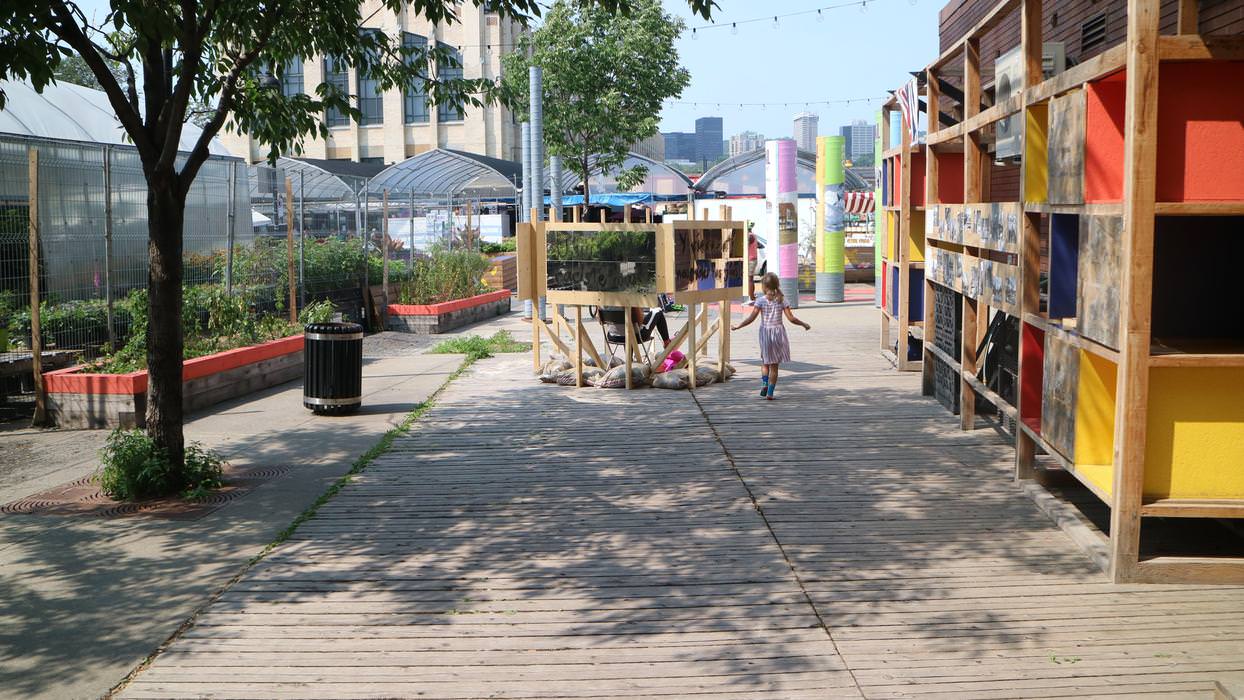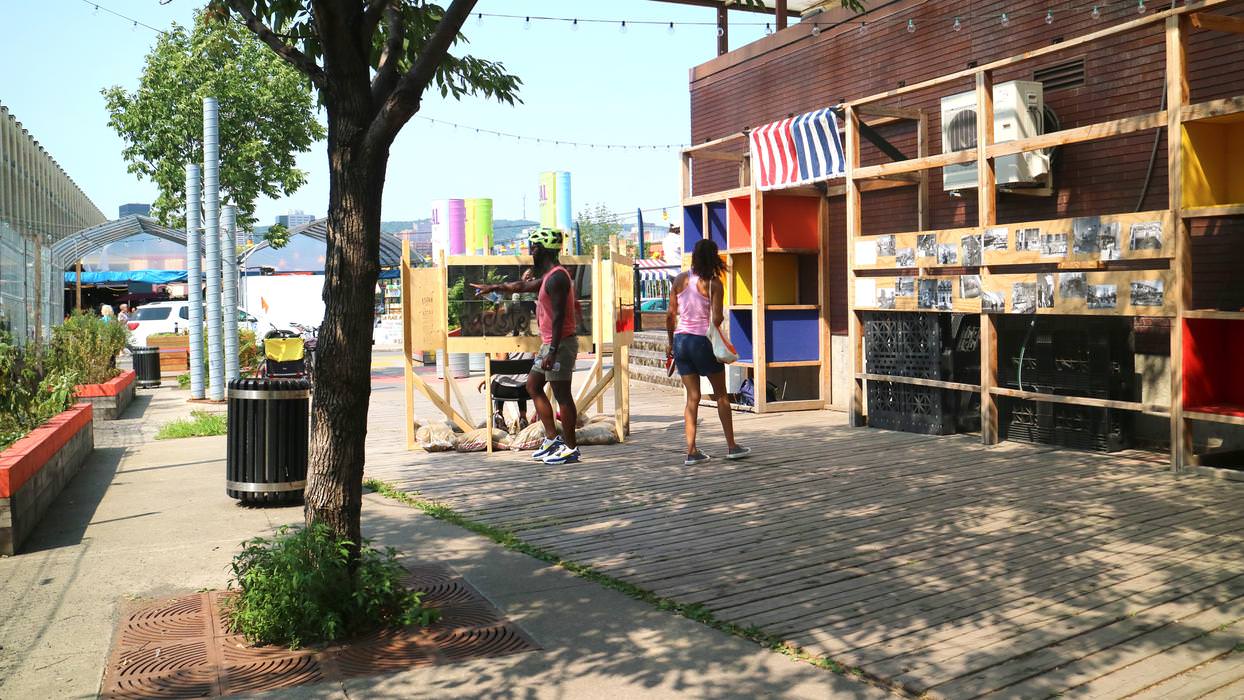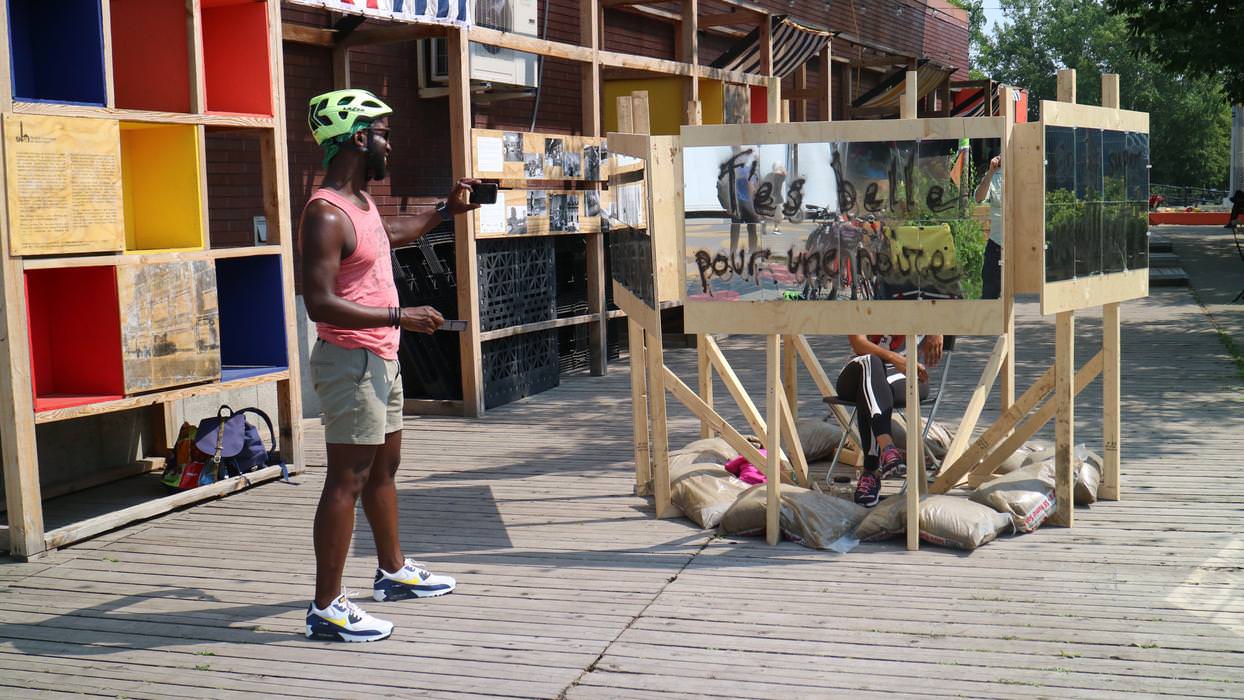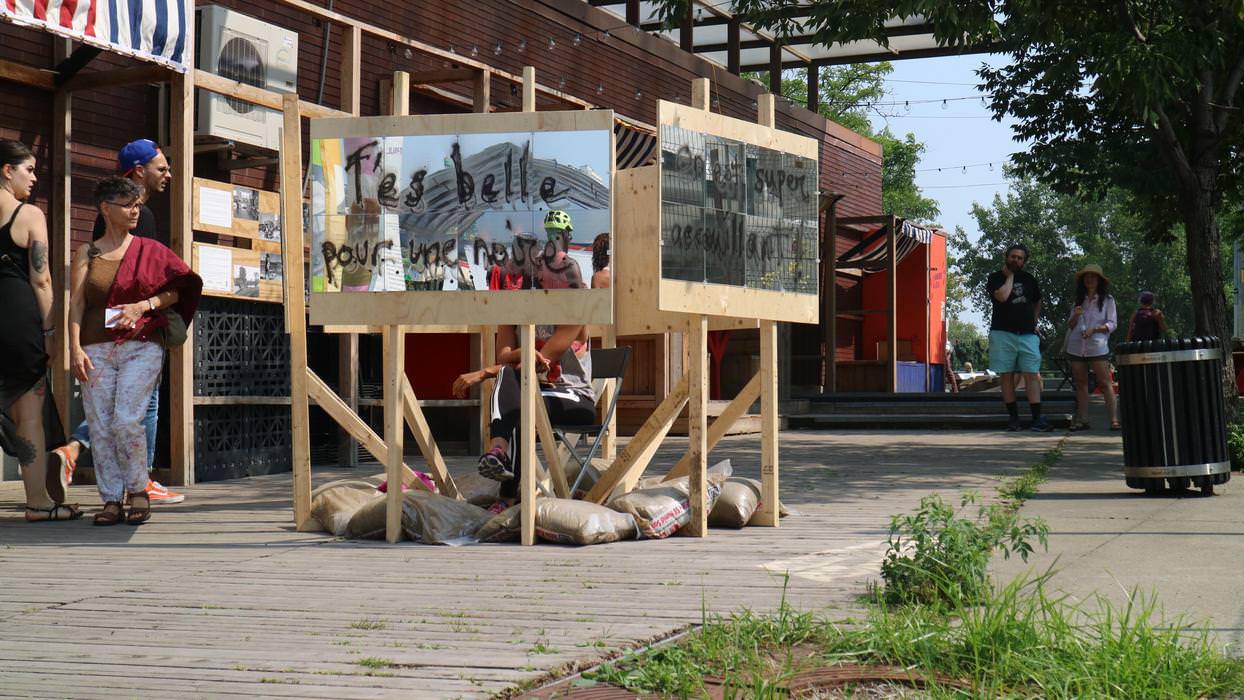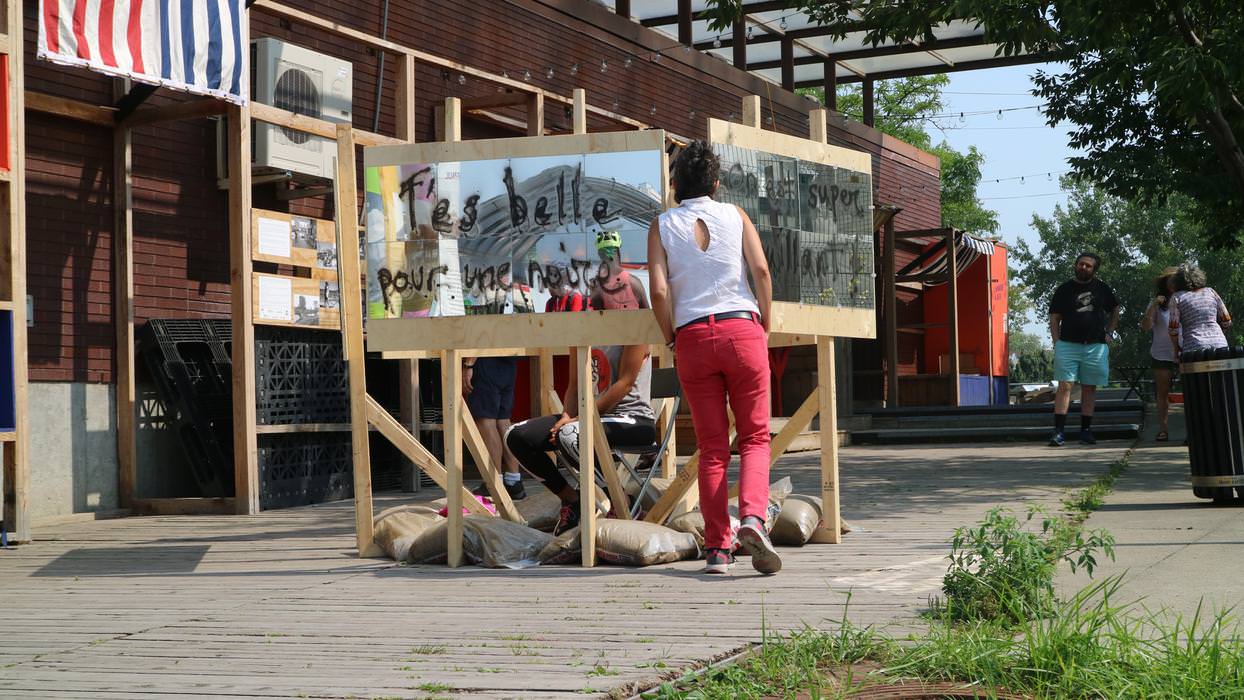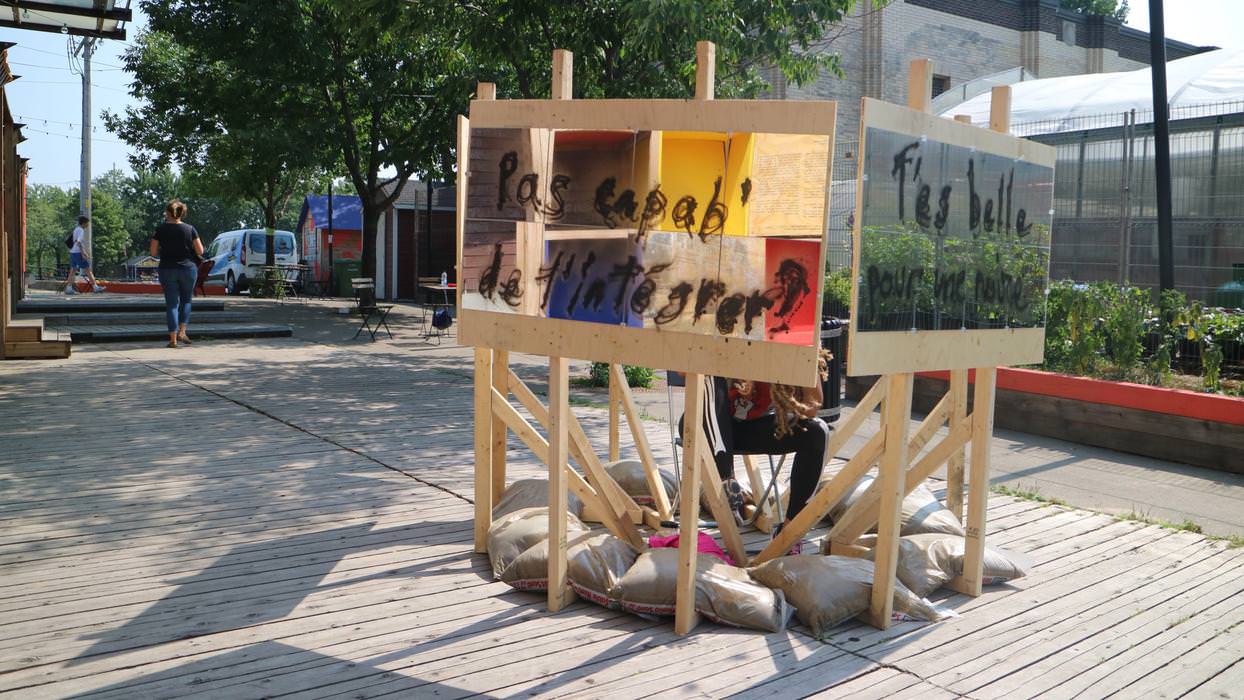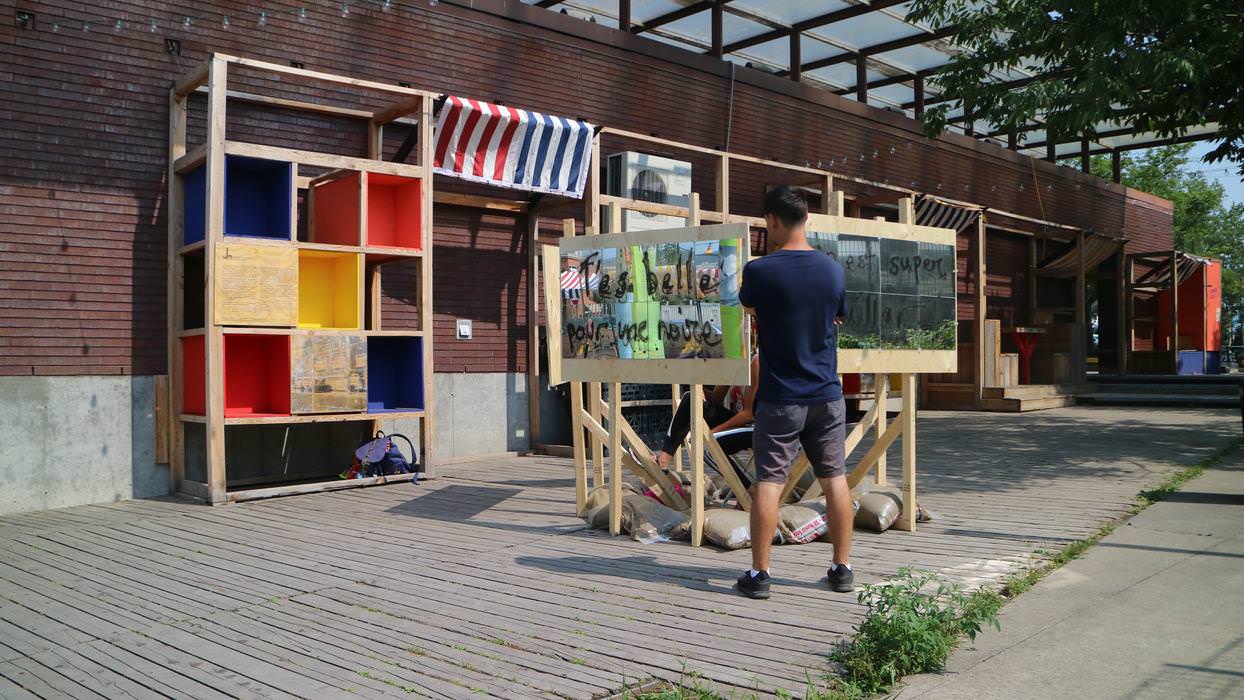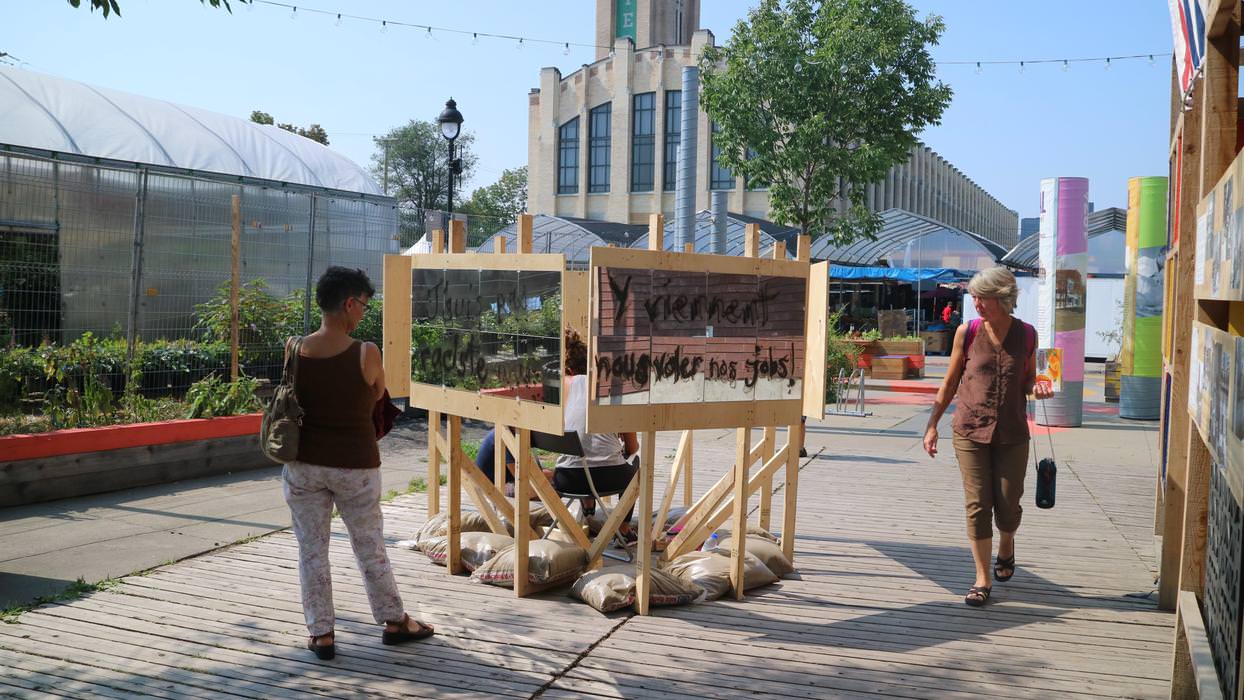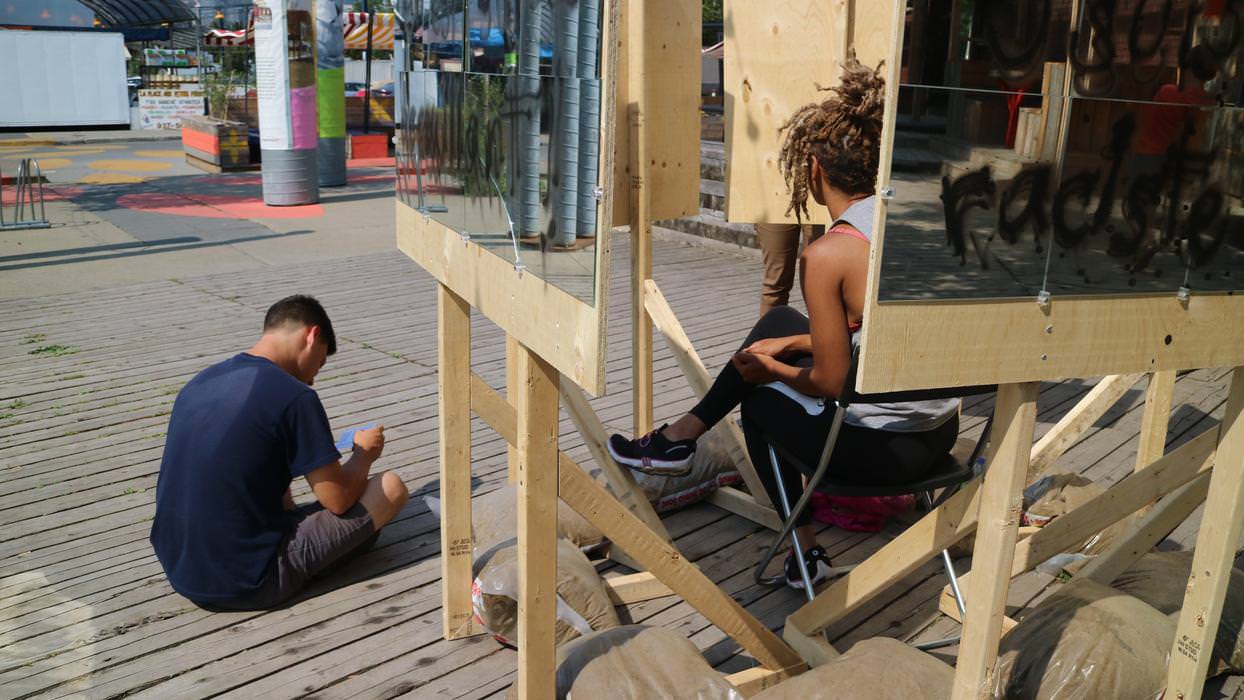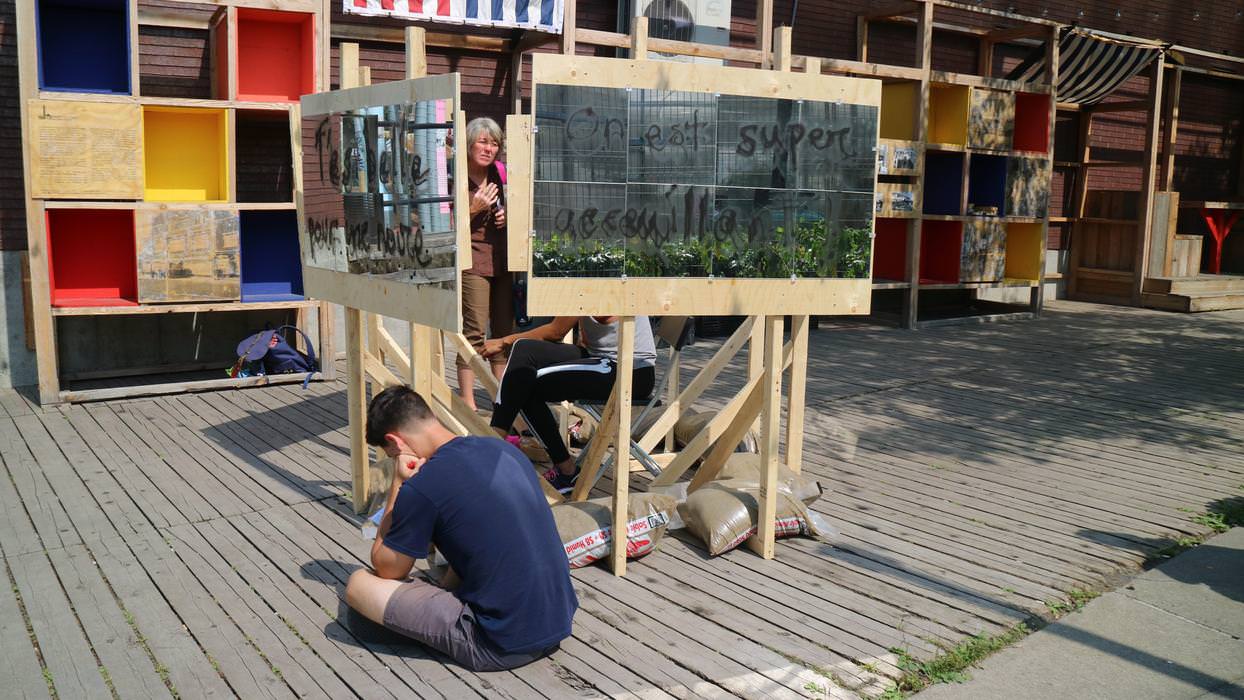Programming
Kamissa Ma Koïta
COGNITIVE DISSONANCE
Dissonance cognitive / Cognitive dissonance est une œuvre en deux temps: d’abord une installation en espace public puis le lieu d’une performance de longue durée.
AU TRAVERS DE : incursions, gestes et postures
A program presented by the collective L'Araignée (Kamissa Ma Koïta, karen elaine spencer, Helena Martin Franco, Noémi McComber).
View more
► on DARE-DARE's SITE
PERFORMANCE I : Saturday July 14, noon to 4 PM
PERFORMANCE II : Sunday July 15, noon to 4 PM
► on Atwater Market PLACE DU MARCHÉ, next to Havre-aux-Glaces
PERFORMANCE III : Friday August 24, noon to 4 PM
« Sometimes people hold a core belief that is very strong. When they are presented with evidence that works against that belief, the new evidence cannot be accepted. It would create a feeling that is extremely uncomfortable, called cognitive dissonance. And because it is so important to protect the core belief, they will rationalize, ignore and even deny anything that doesn’t fit in with the core belief. »
Frantz Fanon, Black Skin, White Masks, 1967 (English version)
Cognitive Dissonance / Cognitive Dissonance could be seen as a two-step art piece: first a public space installation and then a durational performance within this set.
The work questions and confronts the public about their social privileges, the representation of black communities within the public space and the attitudes and language that fuel and maintain these privileges. This new proposal by Ma Koïta aims to challenge stereotypes about Black people and to deconstruct the social beliefs often conveyed to them. Sitting at the center of a mirrored panel installation, the artist is encircled, confined in this place circumscribed by inscriptions of sentences, conveying stereotypes and prejudices commonly heard and listed by the artist. She remains motionless, in the long run, stuck in this narrowed social space. This install-action unfolds in a busy place, frequented and crossed by a myriad of people from different backgrounds and origins, in order to be as visible as possible and to engage the dialogue with a wider public. Approaching the work, in order to decipher the words and sentences transcribed by the artist, passers-by perceive their own reflection through reflecting mirrors. This cross-reflection that juxtaposes the self-image and the prejudices conveyed during social interactions leads to the introspection and questioning of our received ideas, our expectations and our presuppositions.
